A unique collaboration between two UT Southwestern Medical Center labs – one that studies bacteria and another that studies viruses – has identified two immune proteins that appear key to fighting infections.
Tag: Biophysics
Simulation reveals new mechanism for membrane fusion
An intricate simulation performed by UT Southwestern Medical Center researchers using one of the world’s most powerful supercomputers sheds new light on how proteins called SNAREs cause biological membranes to fuse.
Penn scientists create novel technique to form human artificial chromosomes
Human artificial chromosomes (HACs) capable of working within human cells could power advanced gene therapies, including those addressing some cancers, along with many laboratory applications, though serious technical obstacles have hindered their development. Now a team led by researchers at the Perelman School of Medicine at the University of Pennsylvania has made a significant breakthrough in this field that effectively bypasses a common stumbling block.
UTSW team’s new AI method may lead to ‘automated scientists’
UT Southwestern Medical Center researchers have developed an artificial intelligence (AI) method that writes its own algorithms and may one day operate as an “automated scientis” to extract the meaning behind complex datasets.
New Method Could Detect Early Ovarian Cancer from Urine Samples
Ovarian cancer is hard to diagnose in its early stages because it has vague symptoms, such as constipation, bloating, and back pain.
Why Ventilators can be Tough on Preemie Lungs
Many premature infants need mechanical ventilation to breathe. However, prolonged ventilation can lead to problems like respiratory diseases or ventilation-induced injury.Jonas Naumann and Mareike Zink study the physics of mechanical stress from ventilation at Leipzig University, in Leipzig, Germany and discovered some of the mechanisms that explain why premature lungs are especially sensitive to stress.
Using Ion Beams to Improve Brain Microscopy
Improving the way scientists can see the microscopic structures of the brain can improve our understanding of a host of brain diseases, like Alzheimer’s or multiple sclerosis. Studying these diseases is challenging and has been limited by accuracy of available models.To see the smallest parts of cells, scientists often use a technique called electron microscopy.
How Ancient Sea Creatures can Inform Soft Robotics
Soft robotics is the study of creating robots from soft materials, which has the advantage of flexibility and safety in human interactions. These robots are well-suited for applications ranging from medical devices to enhancing efficiency in various tasks.
Faster Monkeypox (mpox) Testing Through CRISPR
Mpox, formerly known as monkeypox, is a rare viral disease that is spread through physical contact between people.
The Biophysical Journal Names Erdic Sezgin the 2023 Paper of the Year-Early Career Investigator Awardee
ROCKVILLE, MD – Erdic Sezgin, of Karolinska Institutet, Sweden will be honored as the recipient of the Biophysical Journal Paper of the Year-Early Career Investigator Award at the 68th Annual Meeting of the Biophysical Society, held February 10-14 in Philadelphia, Pennsylvania.
UTSW researchers identify driver of inflammatory bowel disease
Researchers at UT Southwestern Medical Center have discovered an intracellular mechanism that converts protective intestinal cells into disease-driving pathogenic cells, a finding that could lead to improved treatments for patients with inflammatory bowel disease (IBD).

A Journey to the Origins of Multicellular Life: Long-Term Experimental Evolution in the Lab
Over 3,000 generations of laboratory evolution, Georgia Tech researchers watched as their model organism, “snowflake yeast,” began to adapt as multicellular individuals. In new research, the team shows how snowflake yeast evolved to be physically stronger and more than 20,000 times larger than their ancestor. Their study is the first major report on the ongoing Multicellularity Long-Term Evolution Experiment (MuLTEE), which the team hopes to run for decades.
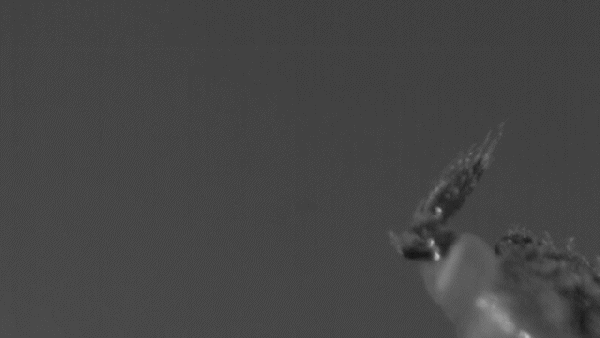
Super-fast insect urination powered by the physics of superpropulsion
Sharpshooter insects excrete by catapulting urine droplets at high accelerations. By using computational fluid dynamics and biophysical experiments, the researchers studied the fluidic, energetic, and biomechanical principles of sharpshooter excretion. Their study reveals how an insect smaller than the tip of a pinky finger performs a feat of physics and bioengineering – superpropulsion.
The Biophysical Journal Names Carlas S. Smith the 2022 Paper of the Year-Early Career Investigator Awardee
Carlas S. Smith, PhD, of Delft University of Technology, the Netherlands was honored as the recipient of the Biophysical Journal Paper of the Year-Early Career Investigator Award at the 67th Annual Meeting of the Biophysical Society, held February 18-22 in San Diego, California. This award recognizes the work of outstanding early career investigators in biophysics.
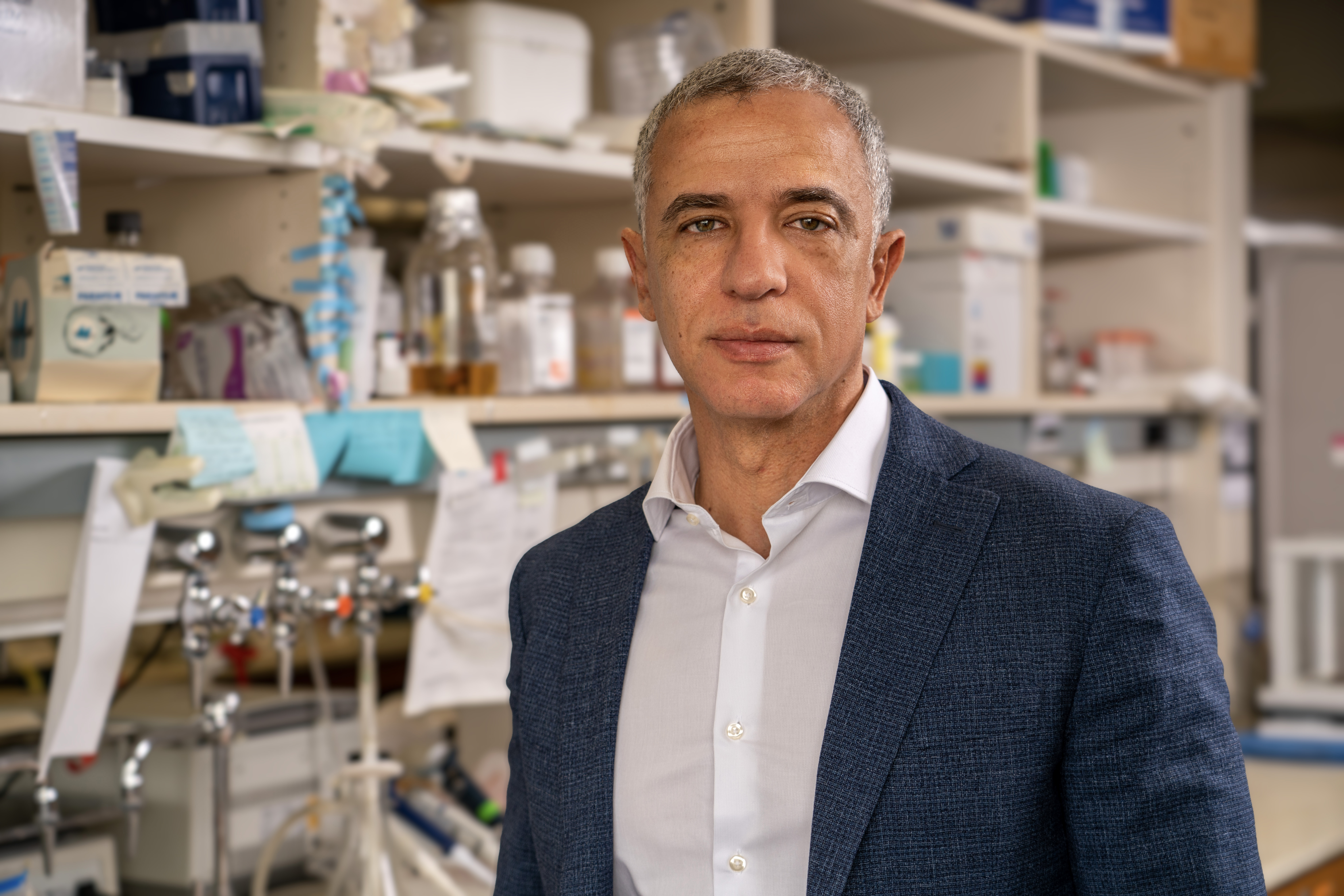
UT Southwestern cardiologist receives NIH Outstanding Investigator Award
UT Southwestern physician-scientist Hesham Sadek, M.D., Ph.D., has received the prestigious National Institutes of Health (NIH) Outstanding Investigator Award to support his ongoing research into mechanisms behind heart regeneration that could lead to treatments for heart failure.
Organelles grow in random bursts
New experiments that show that eukaryotic cells can robustly control average fluctuations in organelle size. By demonstrating that organelle sizes obey a universal scaling relationship that the scientists predict theoretically, their new framework suggests that organelles grow in random bursts from a limiting pool of building blocks.
Ultrafast and ultra-sensitive protein detection method allows for ultra-early disease diagnoses
Protein detection based on antigen–antibody reaction is vital in early diagnosis of a wide range of diseases. How to effectively detect proteins, however, has frequently bedeviled researchers.
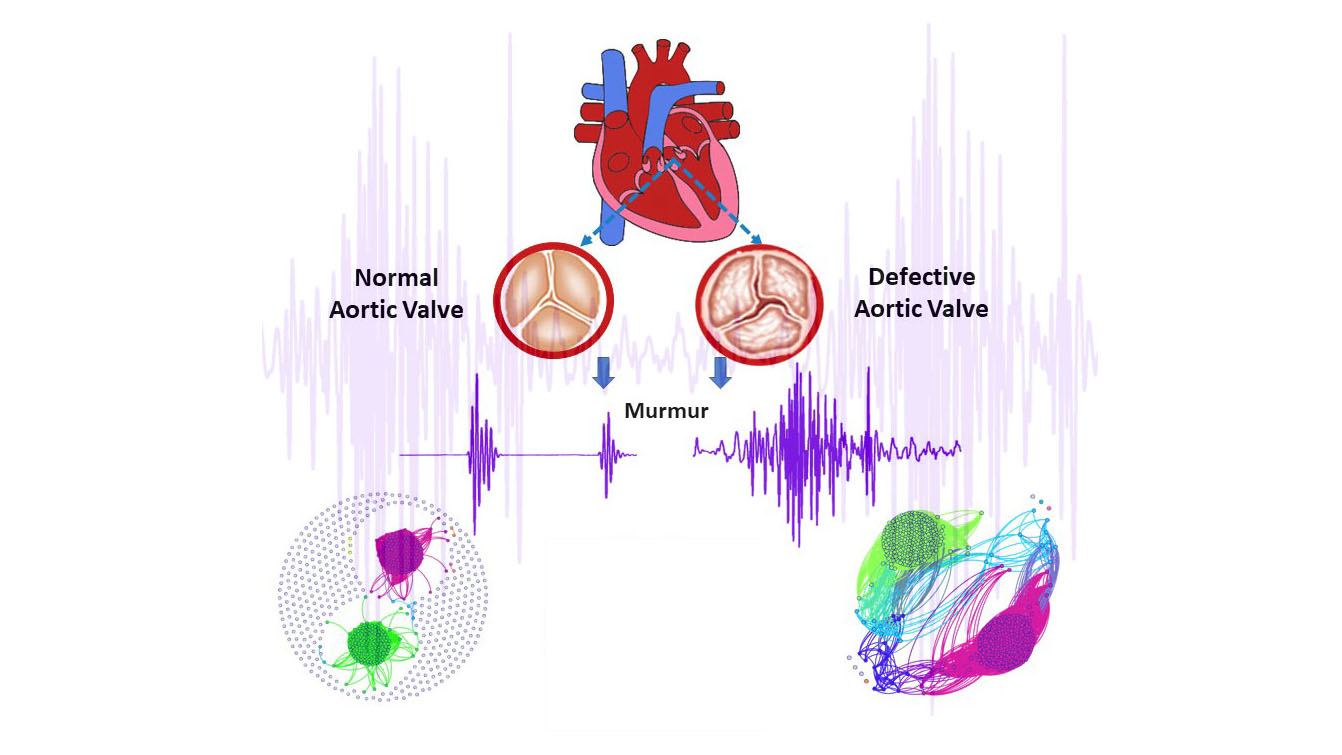
Low-Cost Disease Diagnosis by Mapping Heart Sounds
In the Journal of Applied Physics, researchers develop a method to identify aortic valve dysfunction using complex network analysis that is accurate, simple to use, and low-cost. They used heart sound data to create a complex network of connected points, which was split into sections, and each part was represented with a node. If the sound in two portions was similar, a line was drawn between them. In a healthy heart, the graph showed two distinct clusters of points, with many nodes unconnected. A heart with aortic stenosis contained many more correlations and edges.
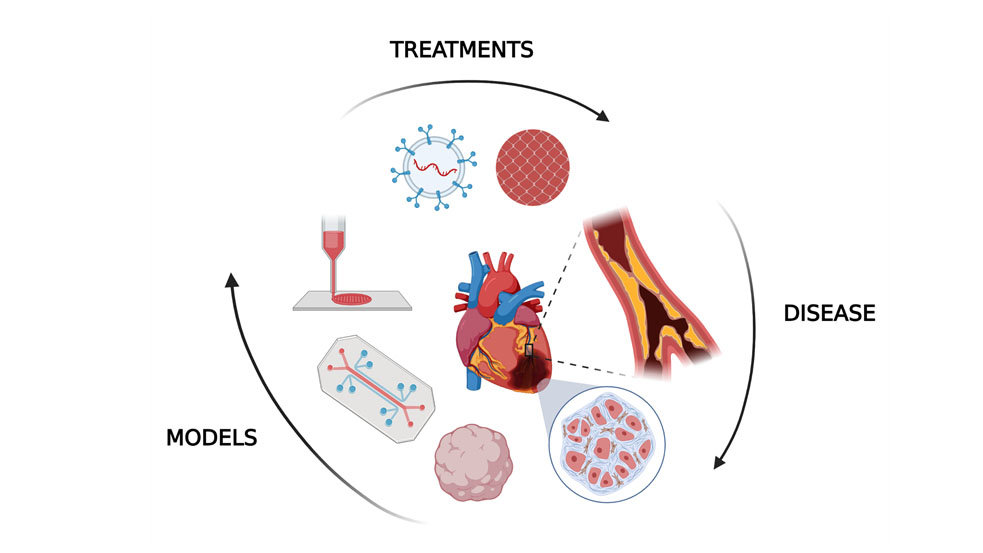
Treating, Preventing Heart Attacks with Human Tissue Models
In Biophysics Reviews, researchers explore how human tissue models can be used to examine the impact of heart attacks and treatment of the fibrotic tissue outside the body, improving treatment and diagnosis. They use organoids, 3D organlike multicellular models derived from stem cells, to mimic natural development, structural organization, regeneration, and disease progression. Meanwhile, microfluidic devices control cell placement and fluid flow to act like the heart on a chip, while bioprinting allows cardiac tissue to be built up layer by layer.
What the mechanical forces behind protein folding can tell us about metastatic cancer
Cells communicate with themselves and their cellular environment through mechanical bonds. This work advances understanding of the role of these forces on proteins as they interact to accomplish their biological functions, including the control of cancer.
Tiny Limbs and Long Bodies: Coordinating Lizard Locomotion
Using biological experiments, robot models, and a geometric theory of locomotion, researchers at the Georgia Institute of Technology investigated how and why intermediate lizard species, with their elongated bodies and short limbs, might use their bodies to move. They uncovered the existence of a previously unknown spectrum of body movements in lizards, revealing a continuum of locomotion dynamics between lizardlike and snakelike movements.
Exploring New Materials Through Collaboration
Materials Scientist Jim De Yoreo guides a team that develops novel materials and understands how they form through collaboration and mentorship.
When more complex is simpler
Microbial communities shape our health and the health of our planet. Some are familiar to humans, like the microbes that reside in the gut, known as our microbiome. Others keep fermenting along mostly under the radar.
Regulator Proteins or Symphonies of Genes: Statistical Modeling Points Way Toward Unified Theory for DNA Folding
Researchers seek to point a way toward a unified theory for how DNA changes shape when expressing genes. Presenting their work in Biophysics Reviews, the scientists use an approach called statistical mechanics to explore the phenomenon of so-called expression waves of gene regulation.
Bacteria could learn to predict the future
Using computer simulations and a simple theoretical model, a new paper shows how bacteria could adapt to a fluctuating environment by learning its statistical regularities — for example, which nutrients tend to be correlated — and do so faster than evolutionary trial-and-error would normally allow.
SLAS Discovery’s September Special Collection “Applications of Biophysics in Early Drug Discovery” Now Available
The September edition of SLAS Discovery is a Special Collection featuring the cover article, “Applications of Biophysics in Early Drug Discovery” by Geoffrey A. Holdgate (AstraZeneca, Macclesfield, UK) and Christian Bergsdorf, Ph.D. (Novartis Institutes for Biomedical Research, Basel, Switzerland).
Cynthia Wolberger Named Director of Johns Hopkins Medicine’s Department of Biophysics and Biophysical Chemistry
Structural biologist Cynthia Wolberger, Ph.D., has been appointed director of the Department of Biophysics and Biophysical Chemistry at the Johns Hopkins University School of Medicine. The first woman to lead the department, she will take over the director position from Mario Amzel, Ph.D., who is stepping down after 15 years of leading the department during his more than 50-year career at Johns Hopkins.
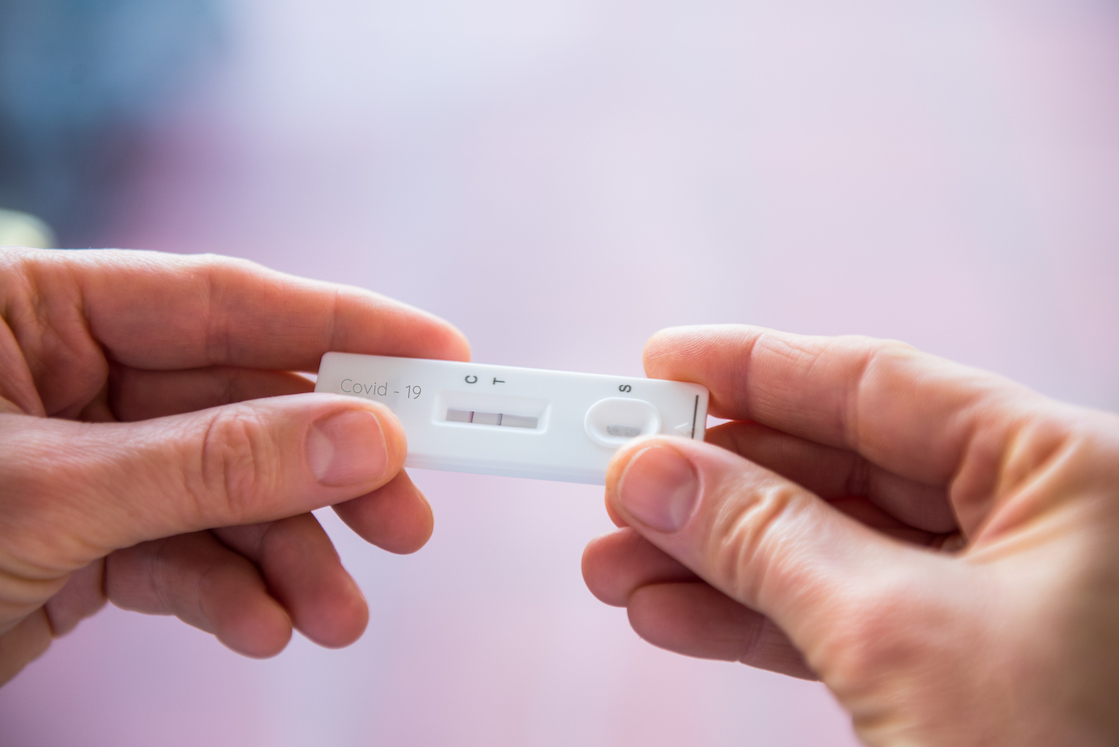
How X-rays Could Make Reliable, Rapid COVID-19 Tests a Reality
Vaccines are turning the tide of the pandemic, but there’s still a risk of COVID-19 infections. Instant at-home tests would help us return to normal, but current options aren’t very accurate. A new discovery could get reliable tests on the market.
UCI-led team awarded $2.3 million by California Initiative to Advance Precision Medicine
Scientists have grown small amounts of self-organizing brain tissue, known as organoids, in a tiny 3D-printed system that allows observation while they grow and develop. The advance uses 3D printing to create a reusable and easily adjustable platform that costs only about $5 per unit to fabricate, and the design includes imaging wells for the growing organoids and microfluidic channels to provide a nutrient medium and preheating that supports tissue growth. The work is reported in Biomicrofluidics.
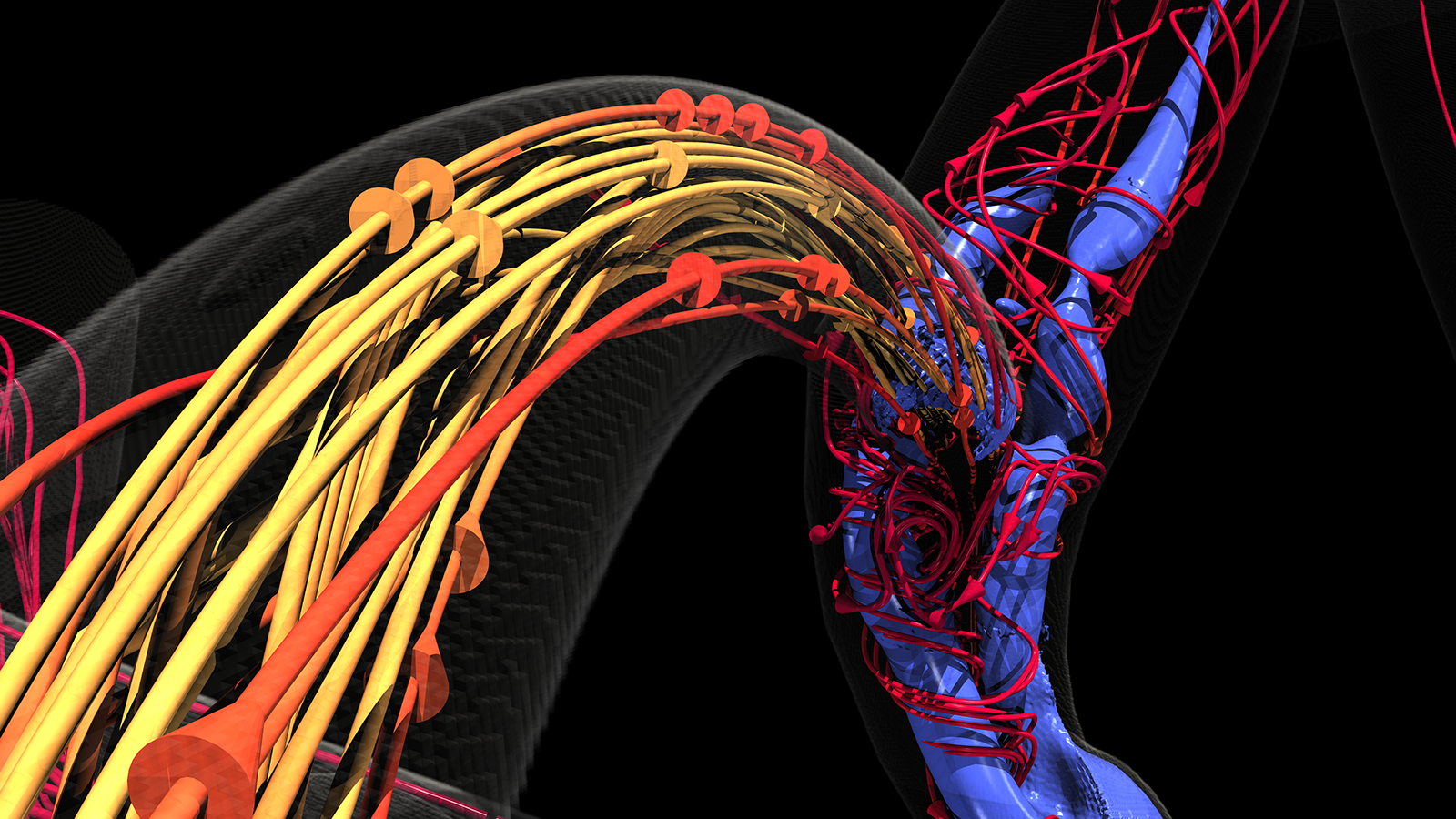
Preparing for exascale: Aurora supercomputer to help scientists visualize the spread of cancer
In advance of Argonne’s Aurora exascale supercomputer, Duke University assistant professor Amanda Randles is leading a new study to analyze cancer metastasis using HARVEY, a code that simulates blood vessels within the human body.
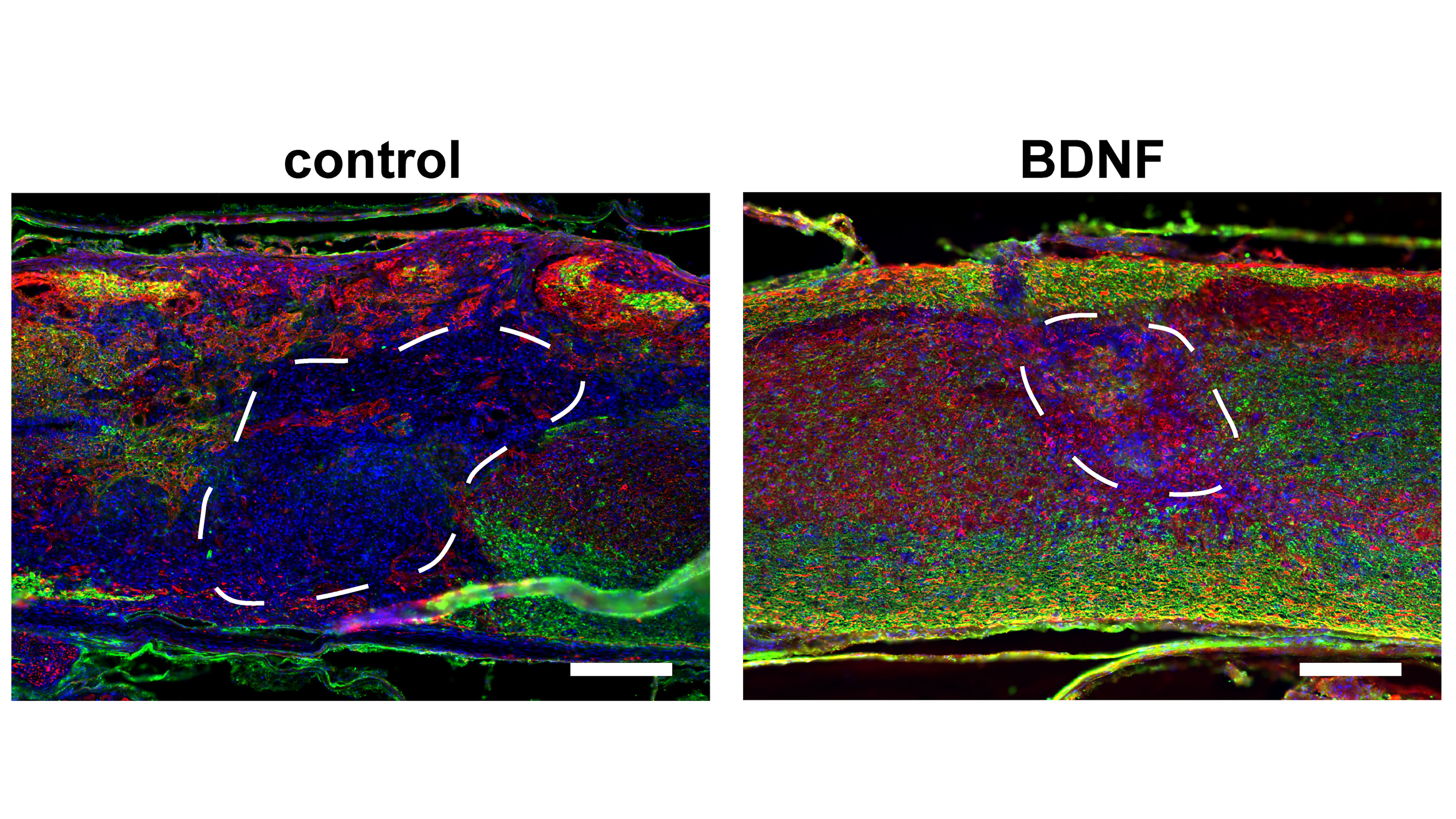
Injectable Porous Scaffolds Promote Better, Quicker Healing After Spinal Cord Injuries
In APL Bioengineering, researchers have developed materials that can interface with an injured spinal cord and provide a scaffolding to facilitate healing. To do this, scaffolding materials need to mimic the natural spinal cord tissue, so they can be readily populated by native cells in the spinal cord, essentially filling in gaps left by injury. The researchers show how the pores improve efficiency of gene therapies administered locally to the injured tissues, which can further promote tissue regeneration.
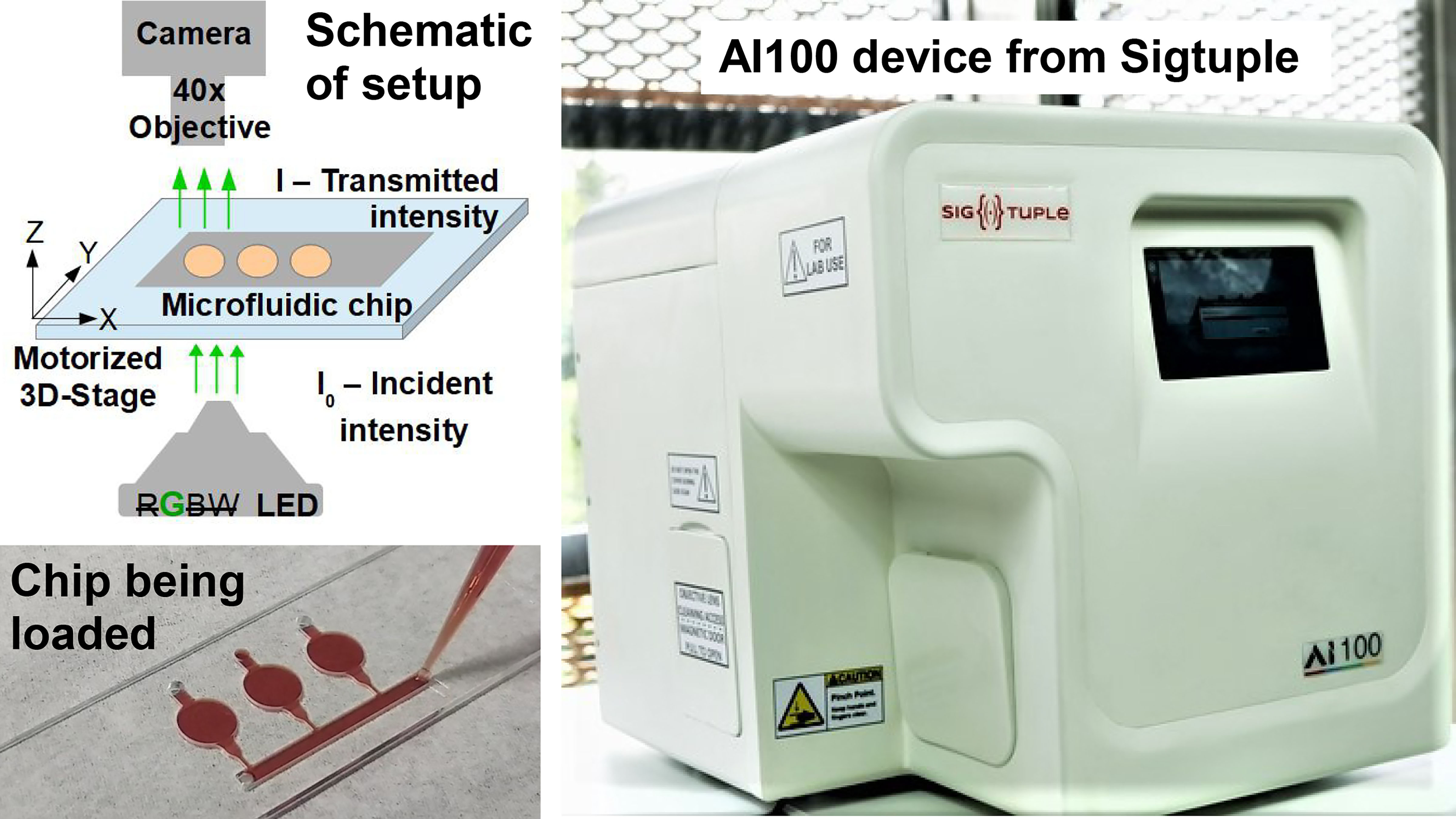
Measuring Hemoglobin Levels with AI Microscope, Microfluidic Chips
A complete blood count can help ascertain the health of a patient and typically includes an estimate of the hemoglobin concentration, which can indicate several conditions, including anemia, polycythemia, and pulmonary fibrosis. In AIP Advances, researchers describe a new AI-powered imaging-based tool to estimate hemoglobin levels. The setup was developed in conjunction with a microfluidic chip and an AI-powered automated microscope that was designed for deriving the total as well as differential counts of blood cells.
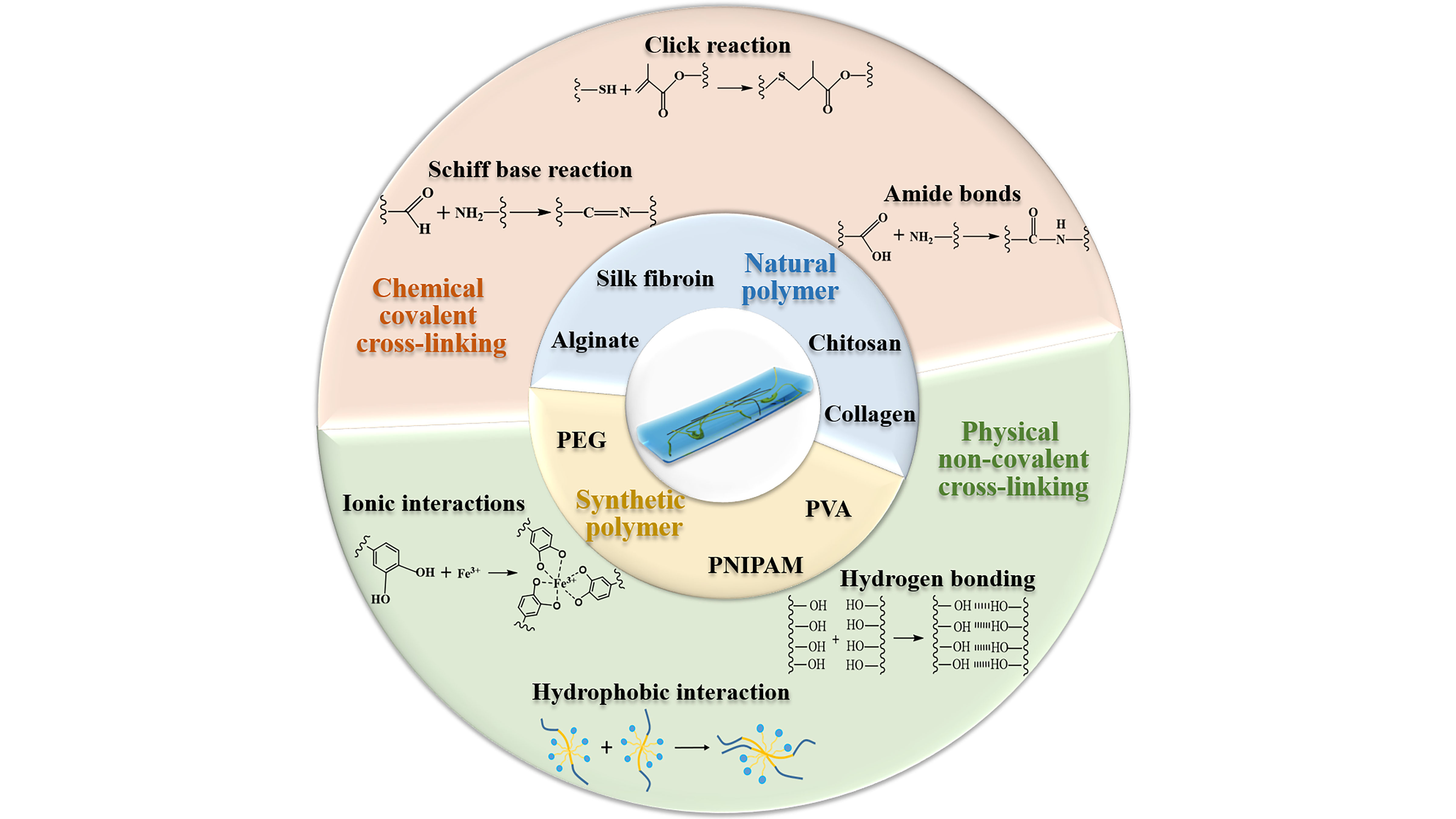
Hydrogel Promotes Wound Healing Better Than Traditional Bandages, Gauzes
For explosion wounds as well as some incurred in disasters and accidents, severe hemorrhage is a leading cause of death. Hydrogel dressings, which have advanced in recent years, may help; they are good at promoting wound healing and can better meet the demands of different situations. Many are antibacterial, biodegradable, responsive, and injectable and can fill irregularly shaped wounds. In APL Bioengineering, researchers in China examine some of the recent advances.
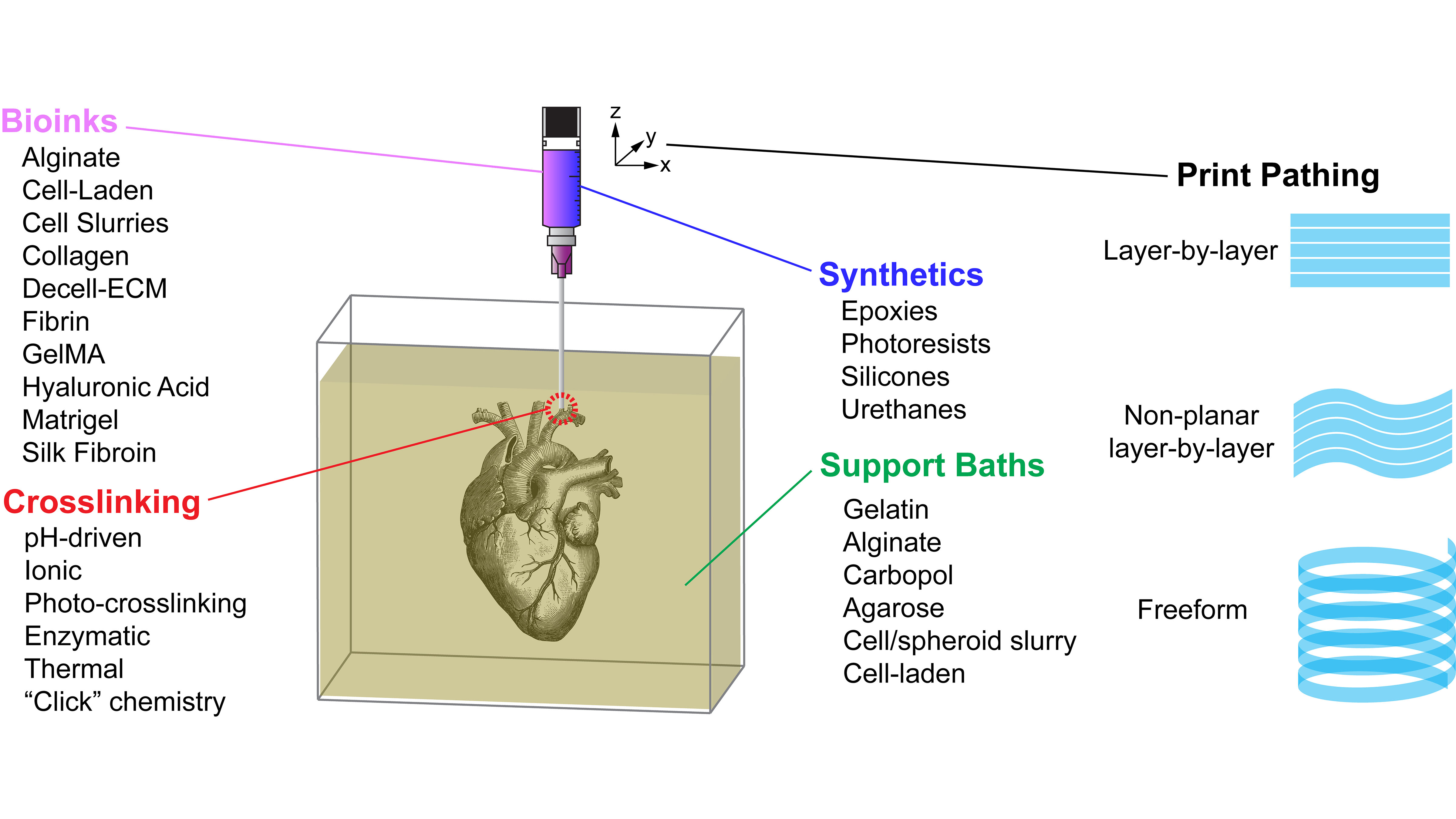
FRESH 3D-Printing Platform Paves Way for Tissues, Organs
Research into 3D bioprinting has grown rapidly in recent years as scientists seek to re-create the structure and function of complex biological systems from human tissues to entire organs. In APL Bioengineering, researchers from Carnegie Mellon University provide perspective on the Freefrom Reversible Embedding of Suspended Hydrogels 3D bioprinting approach, which solves the issue of gravity and distortion by printing within a yield-stress support bath that holds the bioinks in place until they are cured.

The AI-driven initiative that’s hastening the discovery of drugs to treat COVID-19
Ten organizations have created a pipeline of artificial intelligence and simulation tools to narrow the search for drug candidates that can inhibit SARS-CoV-2.
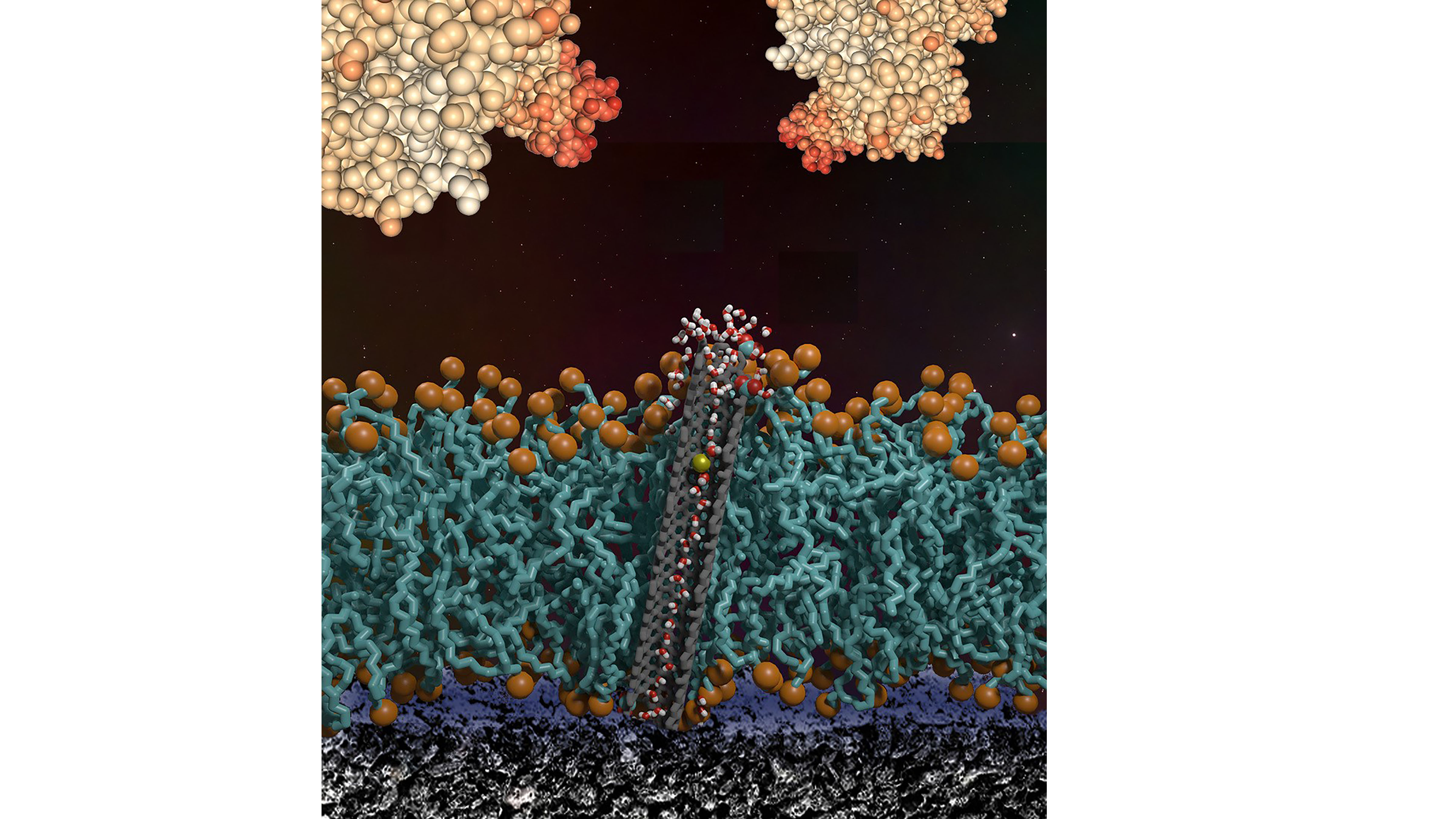
Biosensors Require Robust Antifouling Protection
Some promising biosensors and medical devices work well within pristine laboratory environments but may stop working once exposed to real-world conditions. A thick layer of foulants will quickly cover biosensors, and there is no good way to revive them once they quit working. Essentially, a biosensor is only as good as its antifouling properties. In APL Materials, researchers review a variety of approaches developed to combat fouling.
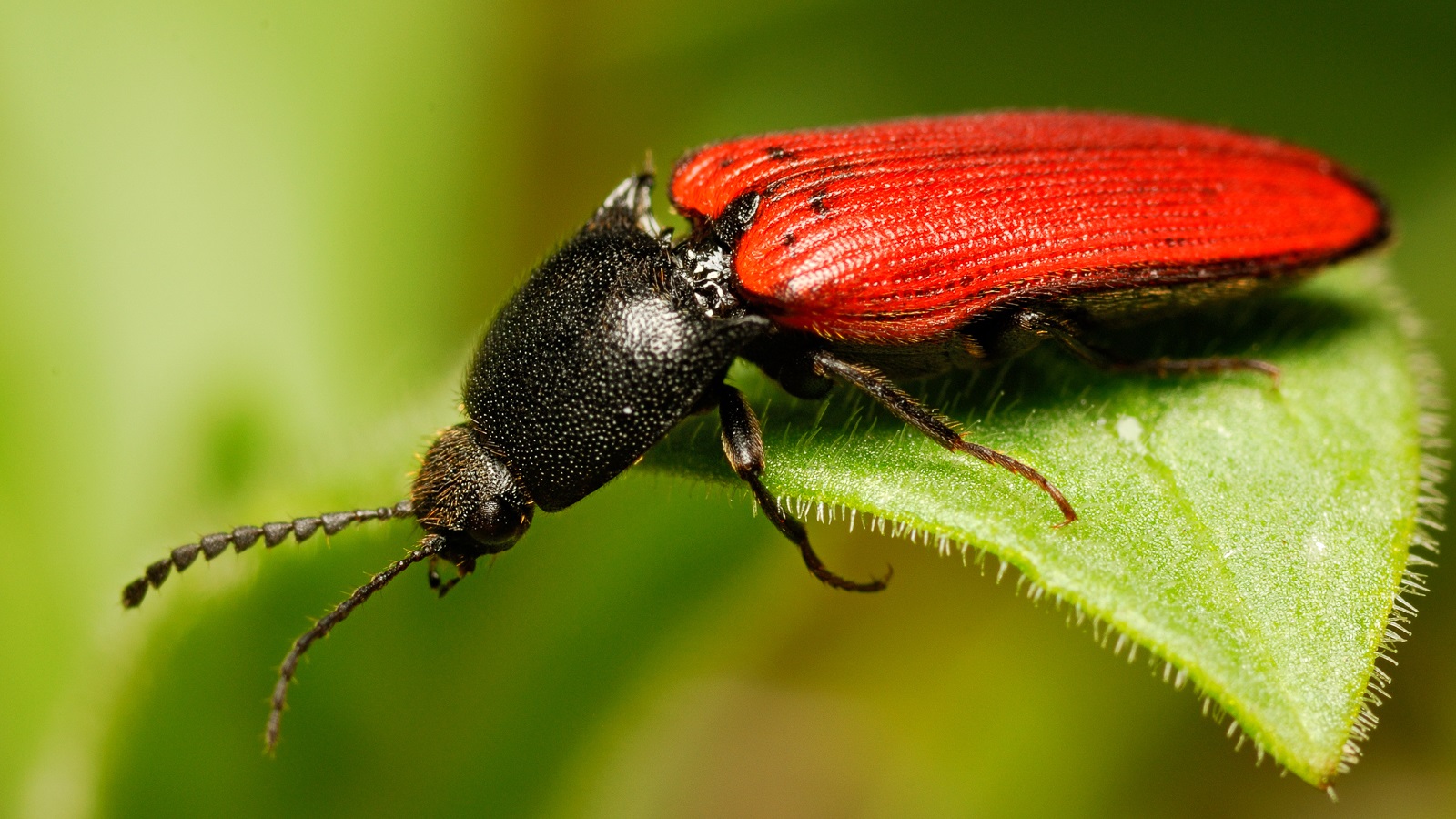
Latch, load and release: Advanced Photon Source helps reveal elastic motion that makes click beetles click
A new study examines the forces behind the quick energy release beetles use for propulsion and provides guidelines for studying extreme motion and energy storage and release in animals.
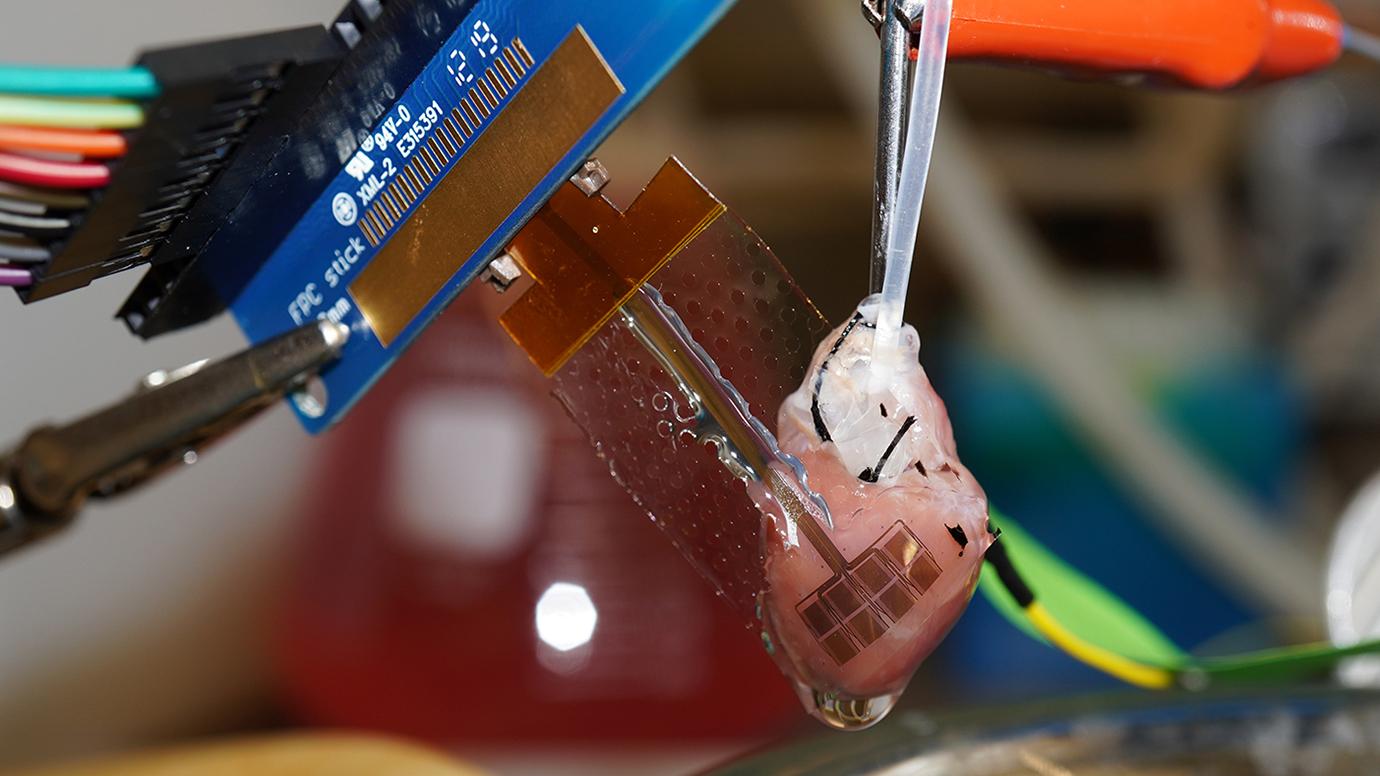
New self-assembly method creates bioelectronics out of microscopic structures
Bringing together soft, malleable living cells with hard, inflexible electronics can be a difficult task. UChicago researchers have developed a new method to face this challenge by utilizing microscopic structures to build up bioelectronics rather than creating them from the top down – creating a highly customizable product.
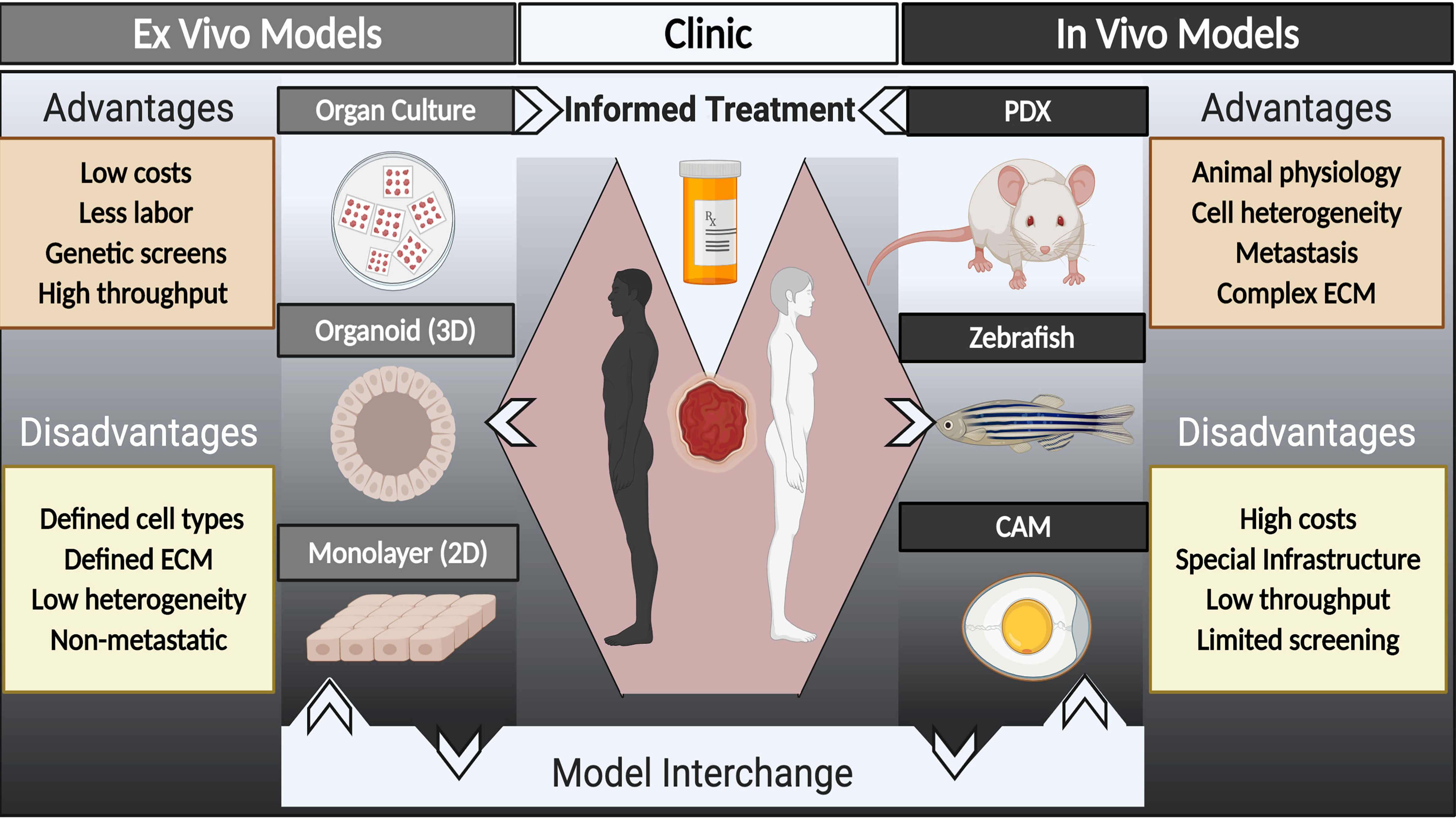
Personalizing Cancer Care with Improved Tumor Models
While decades of research have resulted in substantial improvements in surviving cancer, a key challenge remains in identifying new drugs that improve outcomes for patients. In APL Bioengineering, researchers suggest a major hurdle is the paucity of models for cancer research that accurately represent patient tumors. They provide a perspective on strategies using models from individual patients and where the field needs to go in terms of research in animal systems and in culture systems.
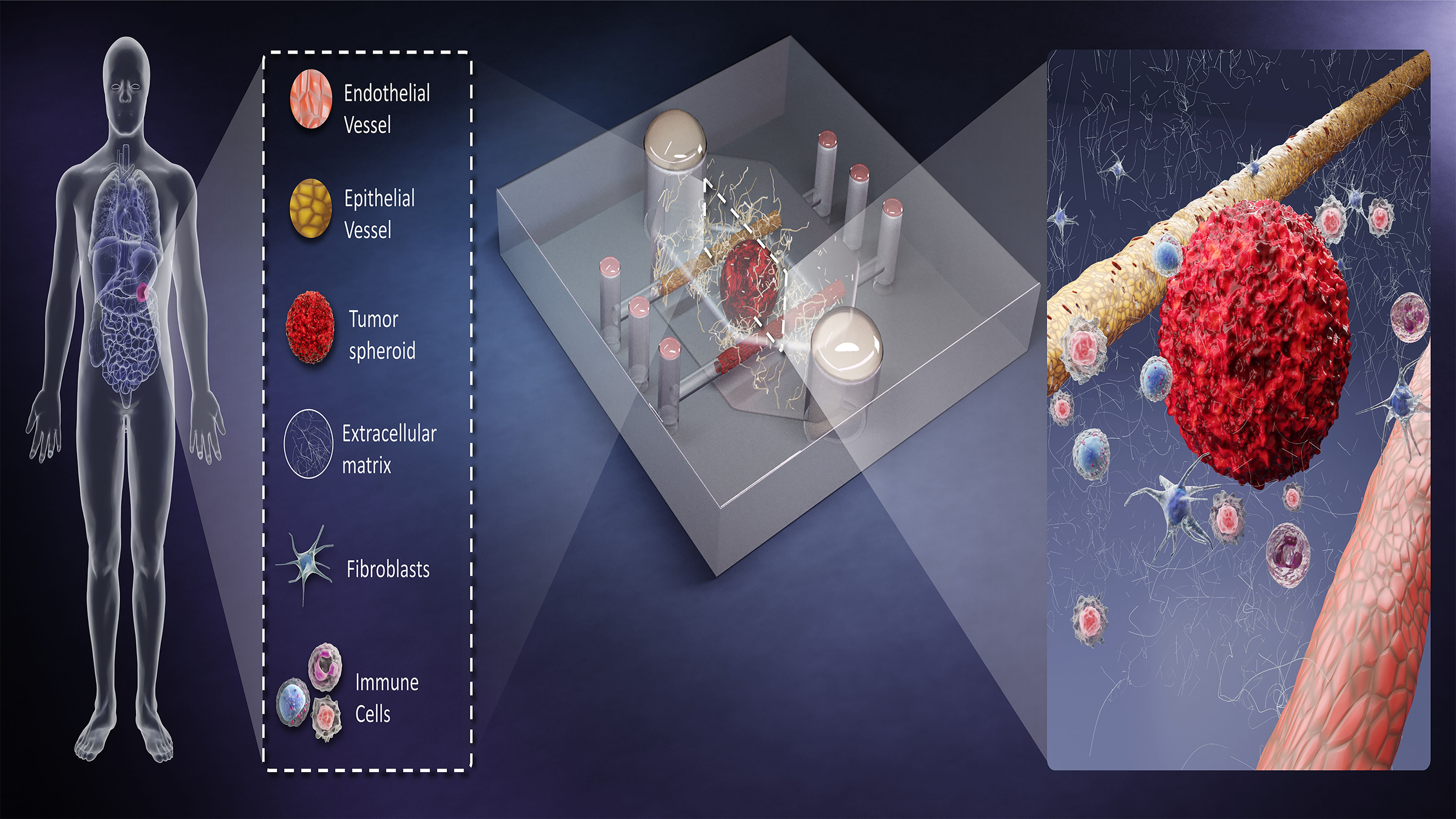
Combining Best of Both Worlds for Cancer Modeling
Treatment options for many types of cancers remain limited, due partly to the in vitro tools used to model cancers and that results from animal studies do not always translate well to human disease. These shortcomings point to a clear need for a better, patient-specific model. Researchers suggest bioengineered microscale organotypic models can address this need. They discuss the advantages and capabilities of this technique, as well as its challenges, in the journal APL Bioengineering.

New Insights into Wound Healing Process
Biomedical engineers developed a technique to observe wound healing in real time, discovering a central role for cells known as fibroblasts. The work, reported in APL Bioengineering, is the first demonstration of a wound closure model within human vascularized tissue in a petri dish.
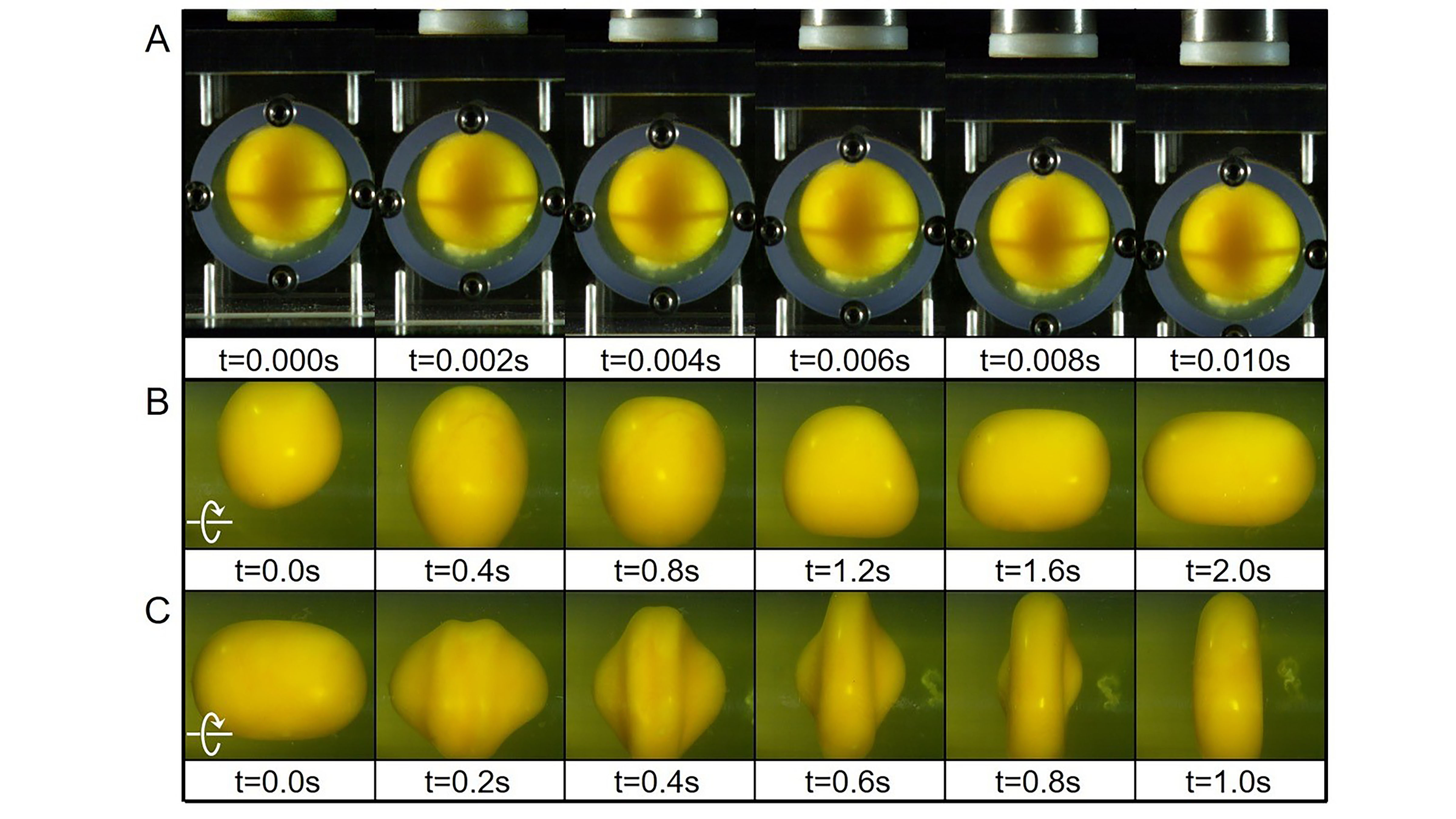
Eggs Reveal What May Happen to Brain on Impact
Our brains consist of soft matter bathed in watery cerebrospinal fluid inside a hard skull, and in Physics of Fluids, researchers describe studying another system with the same features, an egg, to search for answers about concussions. Considering that in most concussive brain injuries, the skull does not break, they wanted to find out if it was possible to break or deform the egg yolk without breaking the eggshell and did a simple experiment using an egg scrambler, measuring the soft matter deformation.
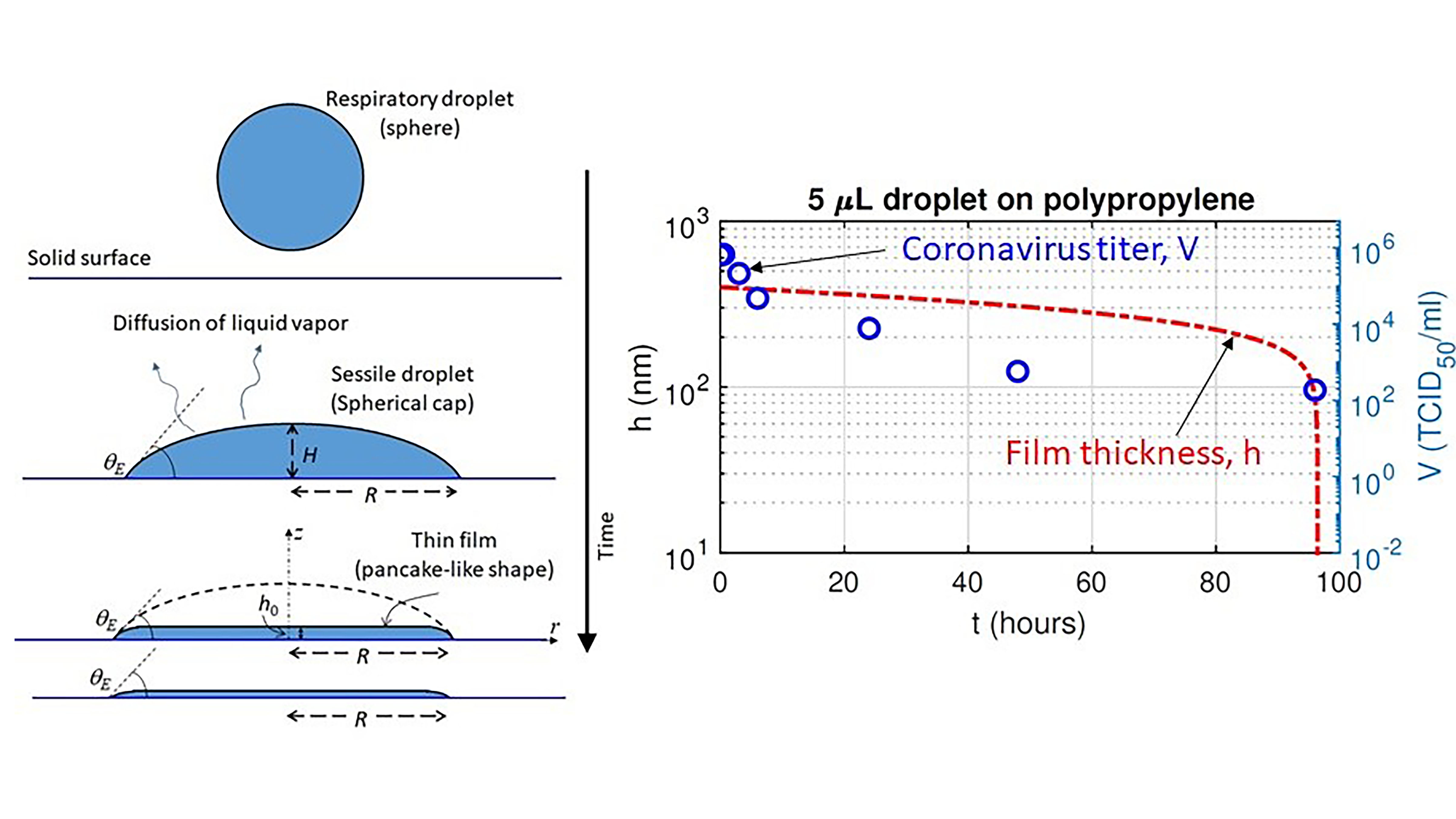
COVID-19 Virus Survives on Surfaces Within Thin Film
To find out how the COVID-19 virus survives on surfaces, researchers in India are exploring the drying times of thin liquid films that persist on surfaces after most respiratory droplets evaporate. While the drying time of typical respiratory droplets is on the order of seconds, the survival time of the COVID-19 virus was found to be on the order of hours. In Physics of Fluids, the researchers describe how a nanometers-thick liquid film clings to the surface, allowing the virus to survive.
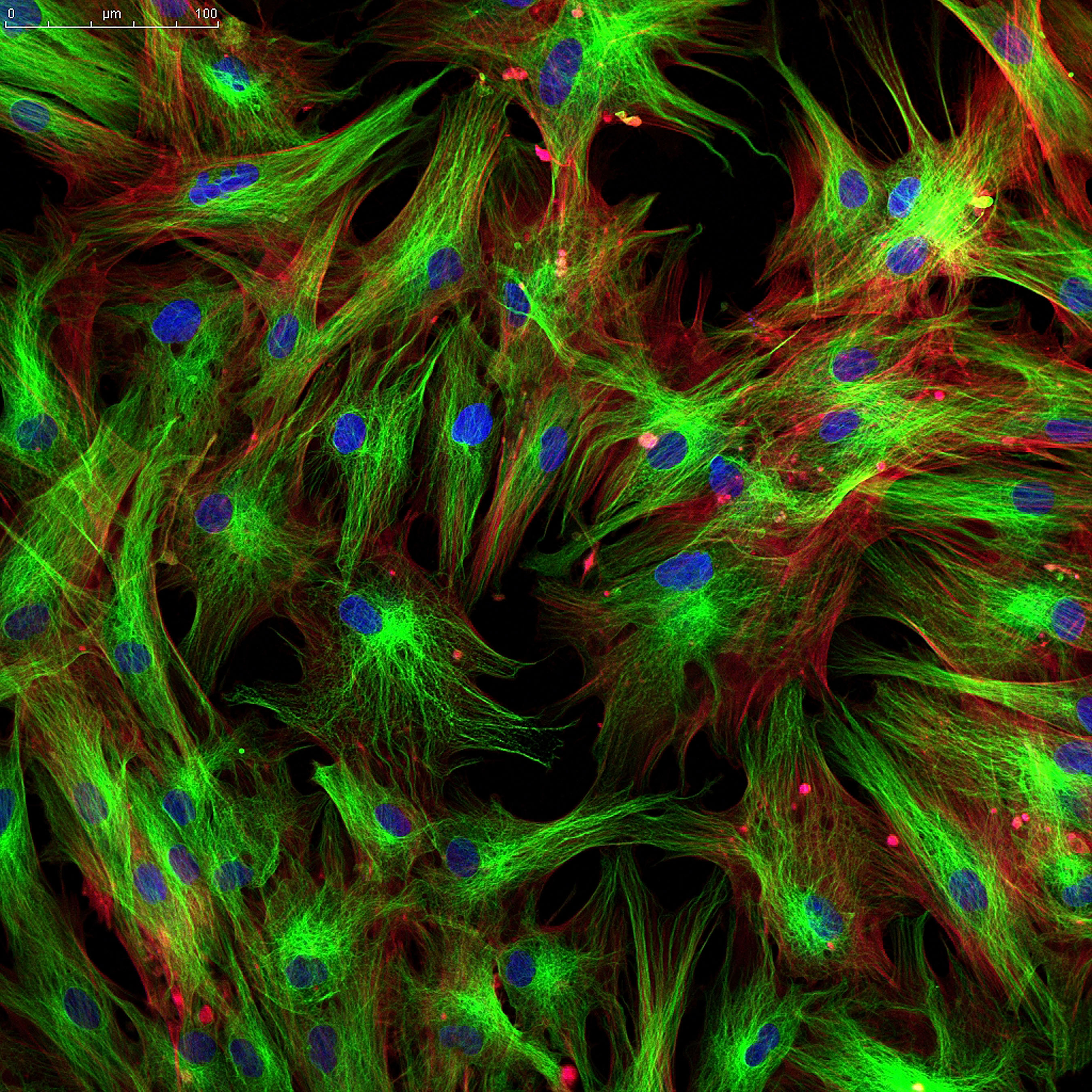
Biophysics Reviews Publishes First Articles, Focuses on Experimental, Theoretical Research
AIP Publishing is pleased to announce the first published articles from its latest journal, Biophysics Reviews. BPR plans to publish articles that have the potential to influence thinking in the biophysics field or report a significant discovery. In both the reviews and research articles, the editors look to provide readers with the ideas and tools necessary to advance the field of biophysics.
Where COVID-19 tests fail: Researcher ready to comment.
MOSCOW (MIPT) — As countries like Great Britain consider introducing testing regimes for international arrivals to ease travel restrictions, even as the media continue to cite coronavirus infection statistics by the hour, more people start wondering about the limitations of COVID-19 test…
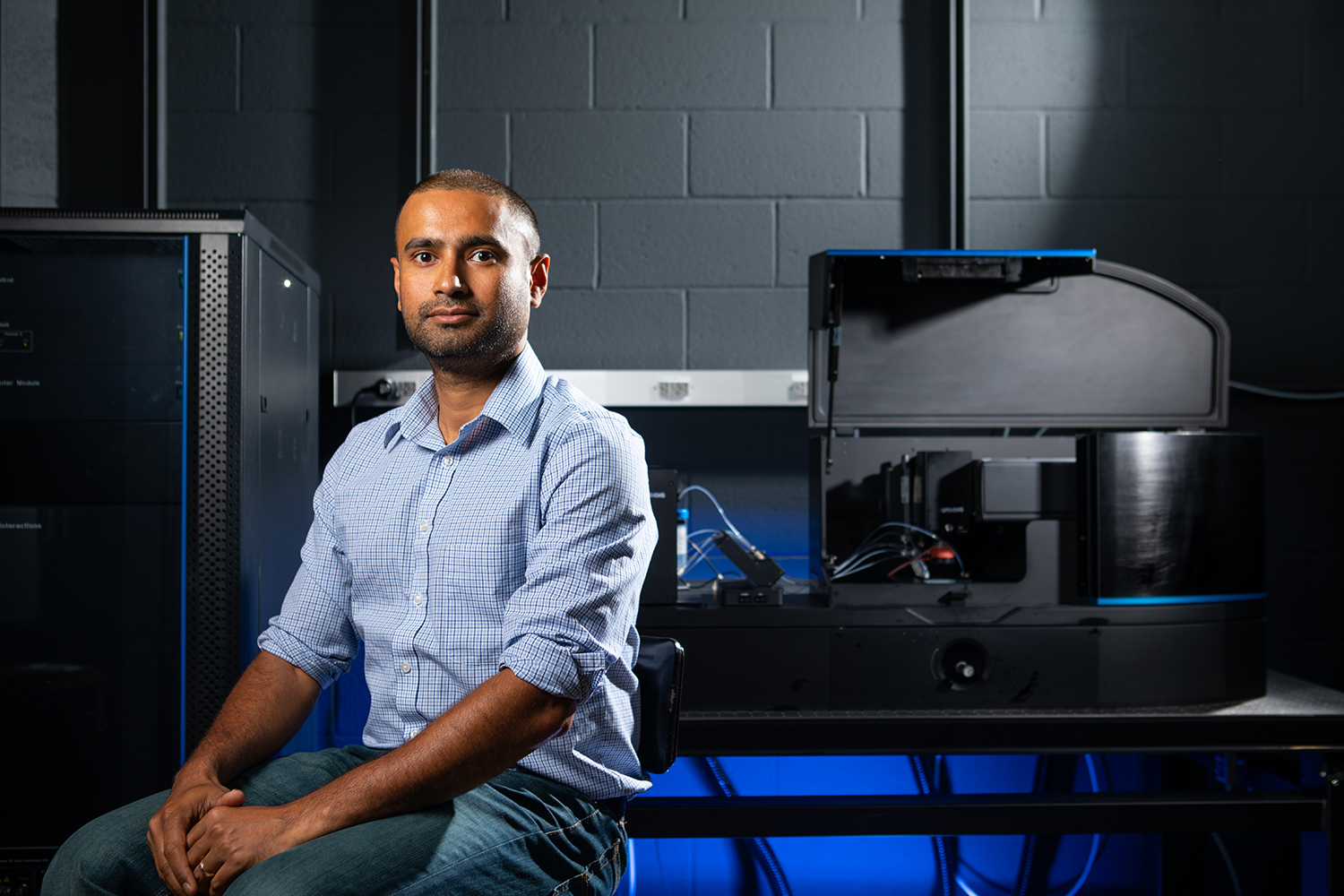
UB biophysicist to explore molecular mysteries of protein-RNA droplets
Inside human cells, proteins and RNA can cluster together to form spherical droplets that play vital roles in cellular processes as well as in certain human diseases. A $2 million grant will allow biophysicist Priya Banerjee’s team at UB to explore the molecular details of protein-RNA condensates.
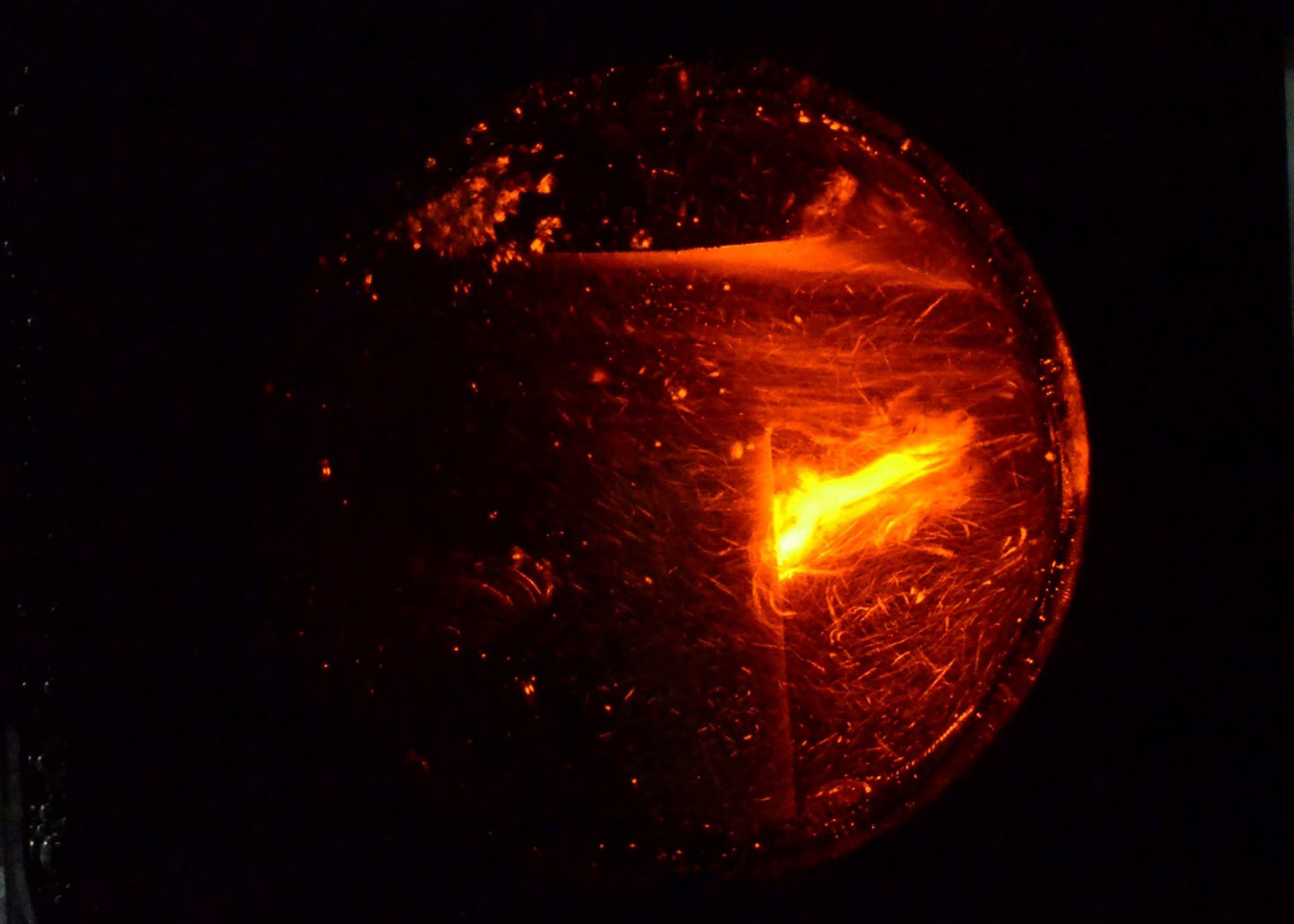
Inducing Plasma in Biomass Could Make Biogas Easier to Produce
Producing biogas from the bacterial breakdown of biomass presents options for a greener energy future, but the complex composition of biomass comes with challenges. Cellulose and woody lignocellulose are especially hard for bacteria to digest but pretreatment can make it easier. Researchers are testing plasma formation in biomass and finding a promising method: A plasma-liquid interaction forms reactive species that help break down the biomass and decrease the viscosity of the biomass material.
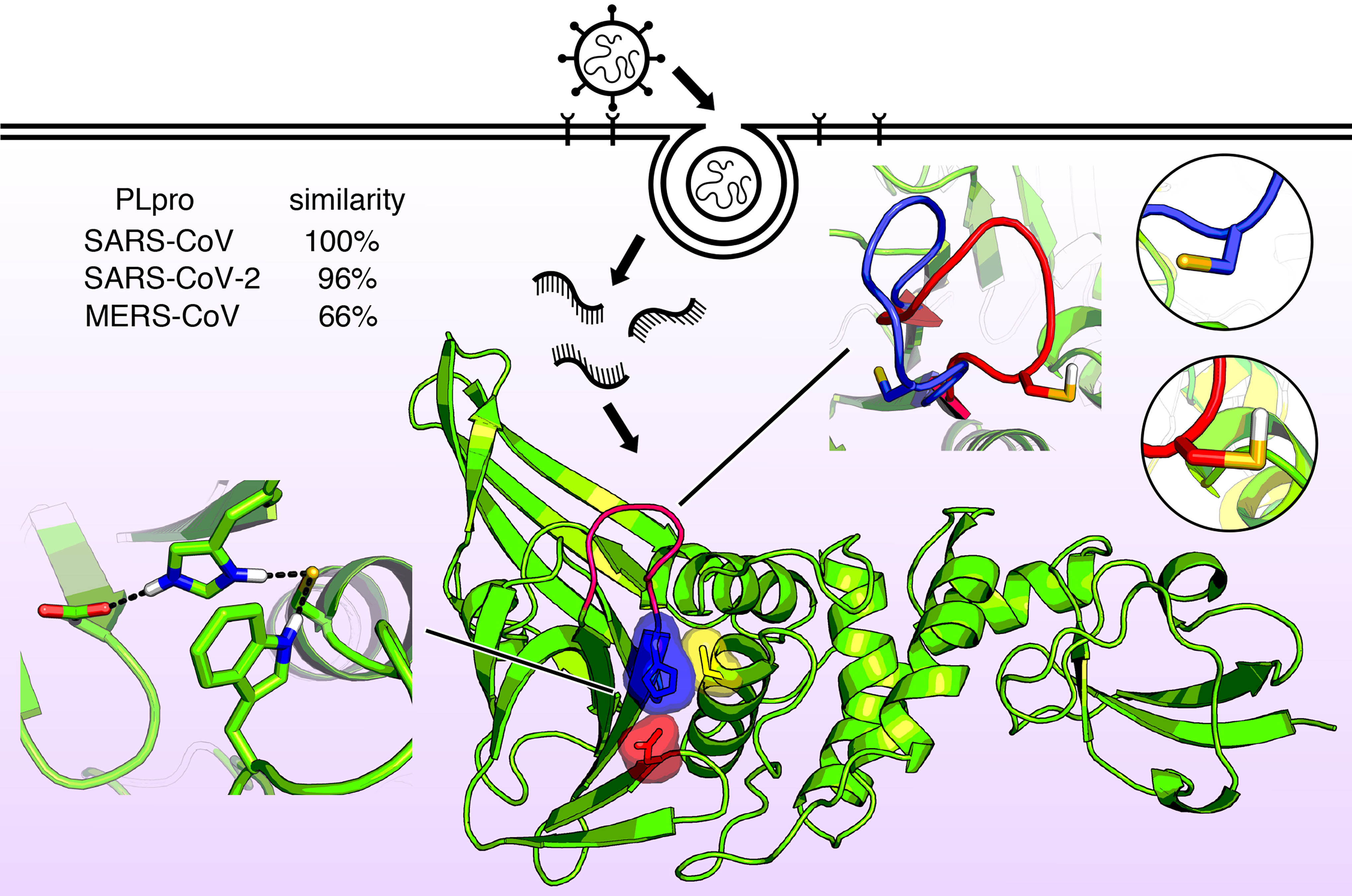
Progress Toward Antiviral Treatments for COVID-19
COVID-19 is caused by the virus SARS-CoV-2, which is structurally similar to the viruses that cause SARS-CoV and MERS-CoV. In The Journal of Chemical Physics, scientists report molecular-level investigations of these viruses, providing a possible pathway to antiviral drugs to fight the diseases. They looked at a viral protein that plays a role in the virus’s ability to replicate and in defeating the host’s immune system, making it an attractive target for potential drug treatments.
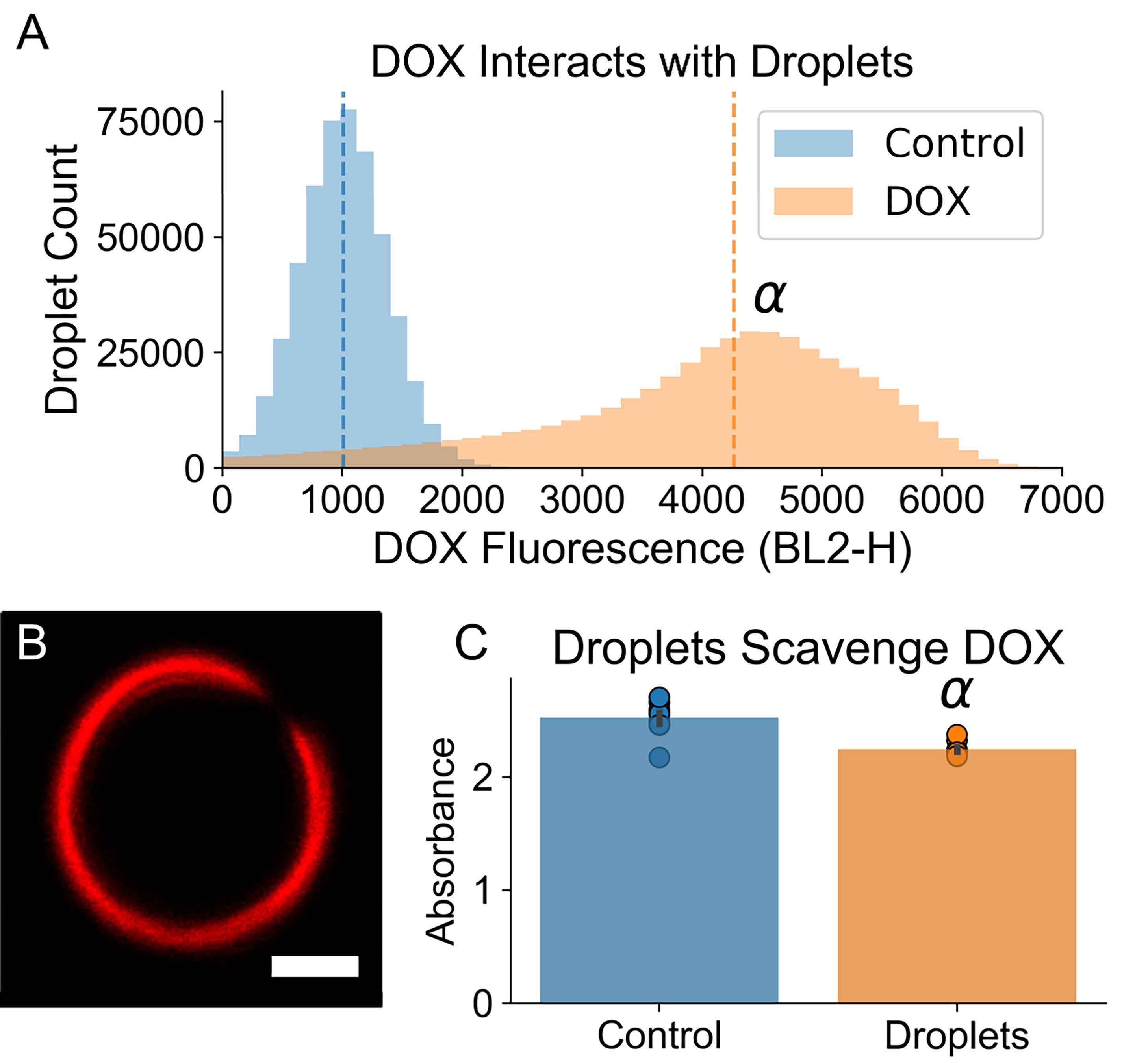
Chemotherapy Drug More Effective When Combined With Microbubbles
Hepatocellular carcinoma is usually treated by blocking the flow of blood to the tumor to induce cancer cell death, but the common treatment, transarterial chemoembolization, is invasive and too imprecise to be a local drug delivery method. Aiming to increase the precision, researchers at Tulane University created a treatment that involves vaporizing tiny droplets of perfluorocarbon, a common organic material composed of carbon and fluorine. The method of gas embolization is published in APL Bioengineering.
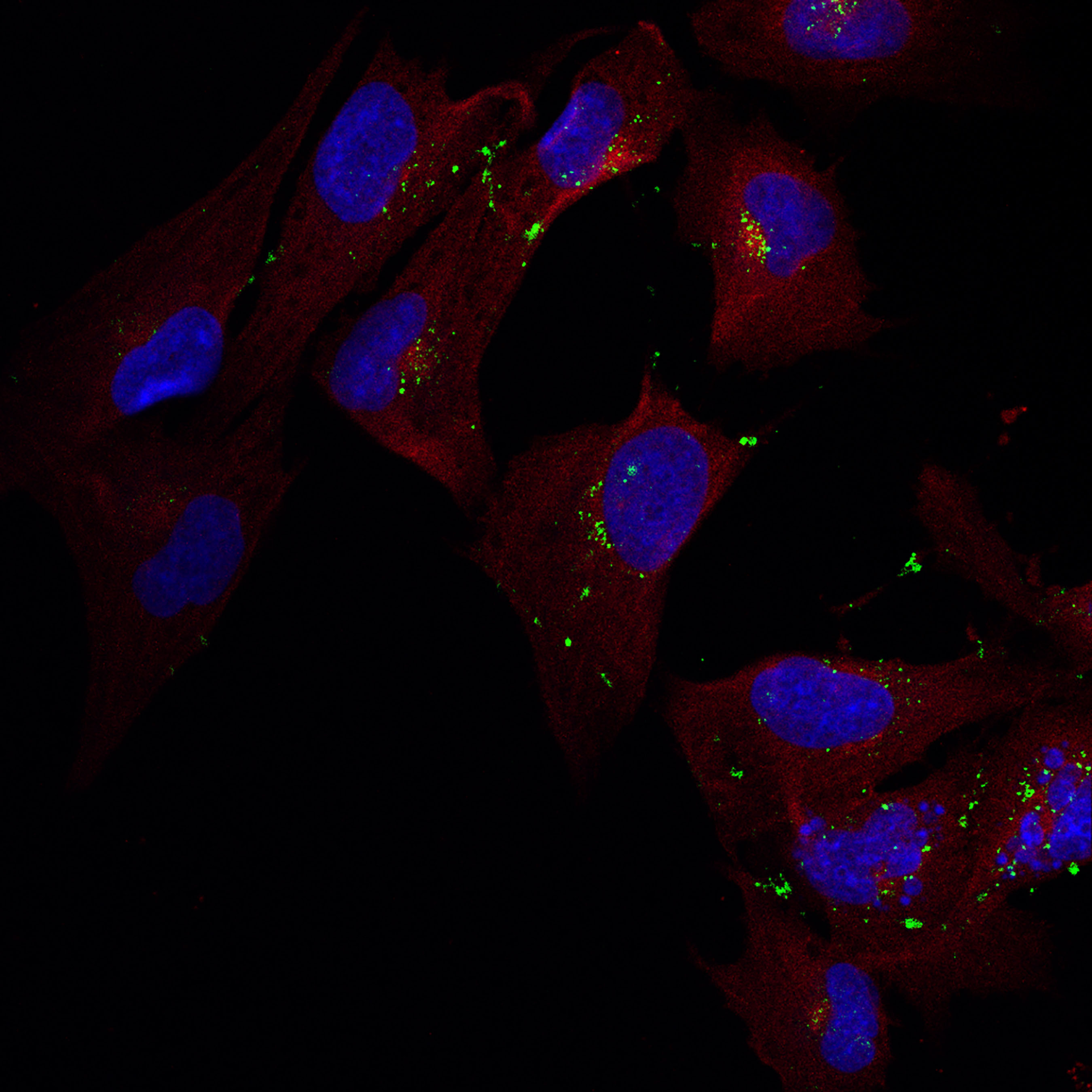
Brain’s Immune Cells Promising Cellular Target for Therapeutics
Inspired by the need for new and better therapies for neurodegenerative diseases, Rutgers University researchers are exploring the link between uncontrolled inflammation within the brain and the brain’s immune cells, known as microglia, which are emerging as a promising cellular target because of the prominent role they play in brain inflammation. In APL Bioengineering, the group highlights the design considerations and benefits of creating therapeutic nanoparticles for carrying pharmacological factors directly to the sites of the microglia.